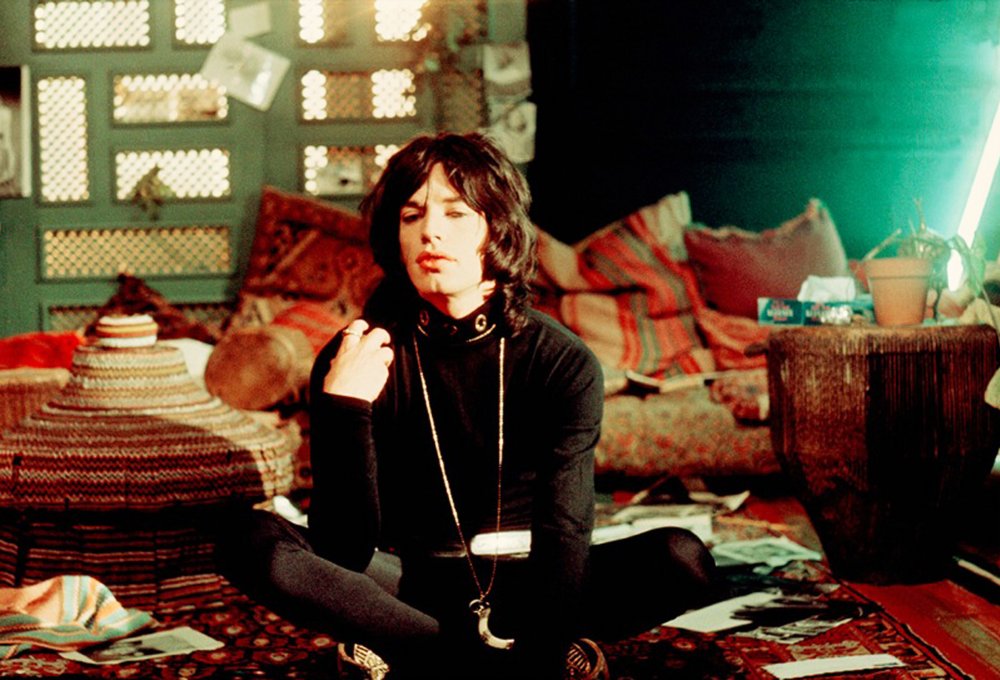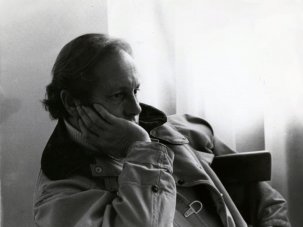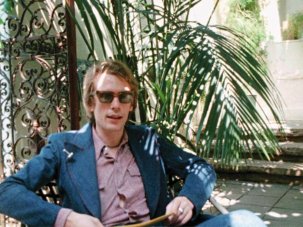Writing about Performance sent me back to The Romantic Agony, Mario Praz’s classic 1933 book on the 19th-century Decadent movement and its background. The chapter headings say it all: The Beauty of the Medusa, The Metamorphoses of Satan, The Shadow of the Divine Marquis, La Belle Dame Sans Merci, Byzantium – and the final appendix on Le Vice Anglais.
Performance is available on BFI Player and most major streaming platforms, and on DVD and Blu-ray.
Killed off for decades in Britain by the Oscar Wilde trial and the suppression of The Yellow Book, the Romantic Agony was re-activated in the 60s with a vengeance. Performance was its new apotheosis, its new Sche’herazade, with Mick Jagger as its Nijinsky (indeed Jagger, something of a balletomane himself, was “obsessed with Rudolph Nureyev in the mid-60s” and “saw a lot of him”, according to Marianne Faithfull in her book Faithfull).
Performance brought together Castaneda, Aleister Crowley, Escher, tantra, “moss-encrusted caves of goblins and elves” – caves in which Jagger, as the doomed King Goblin, pirouetted and pranced with his neon wand through a bewitched court, waiting for the juggler in the basement to finish him off; brought together many of the elements, in other words, of what Faithfull dubs “the hippie canon”.
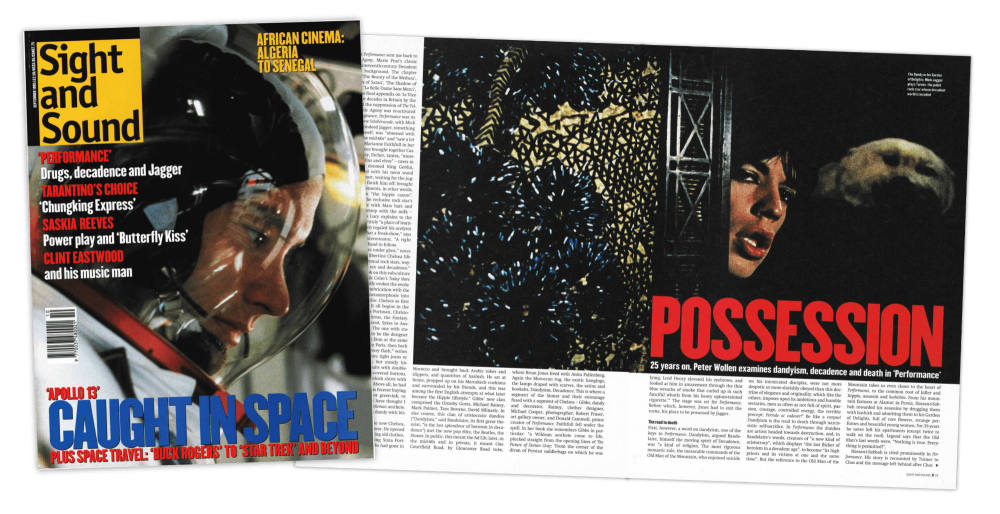
This article was originally published in our September 1995 issue
Another way to see it: the reclusive rock star’s weird abode – complete with Mars bars and mushrooms on the doorstep with the milk – was (as Michele Breton’s Lucy explains to the immigration authorities) truly “a place of learning”, where Turner (Jagger) regaled his acolytes with “magic stories”. “What a freak-show,” says Chas (James Fox), the exterminator. “A right piss-hole!” A bullet in the head to follow.
“It preserves a whole era under glass,” notes Faithfull: “An allegory of libertine Chelsea life in the late 60s, with its baronial rock stars, wayward jeunesse doree, drugs, sex and decadence.” Appropriately, the best book on this sub-culture is a book about clothes, Nik Cohn’s Today there are no Gentlemen, which vividly evokes the evolution of the Chelsea Set, its imbrication with the pop music elite and its metamorphosis into flower power and psychedelia: Chelsea as first stop on the road to Persia.
It all begins in the mid-50s – Mark Sykes, Suna Portman, Christopher Gibbs, the Markham Arms, the Fantasy. Sykes and Portman disappeared, Sykes to Australia, Portman to Morocco. The one with stamina was Gibbs, eventually to be the designer of Performance. Expelled from Eton at the same time as Sykes, he went first to Paris, then back to London in 1956.
“He was very flash,” writes Cohn. “Sometimes he just wore tight jeans or fancy dress, like the others; but mostly his tastes were more elaborate: suits with double-breasted waistcoats and cloth-covered buttons, and velvet ties, and striped Turkish shirts with stiff white collars, and cravats. Above all, he had a passion for carnations and was forever buying new strains, pink-and-yellow, or green-ink, or purple with red flecks. ‘I must have thought I was an aesthete,’ he says. ‘A gentleman aesthete. But I was a bit grubby as well; a dandy with bitten fingernails.”
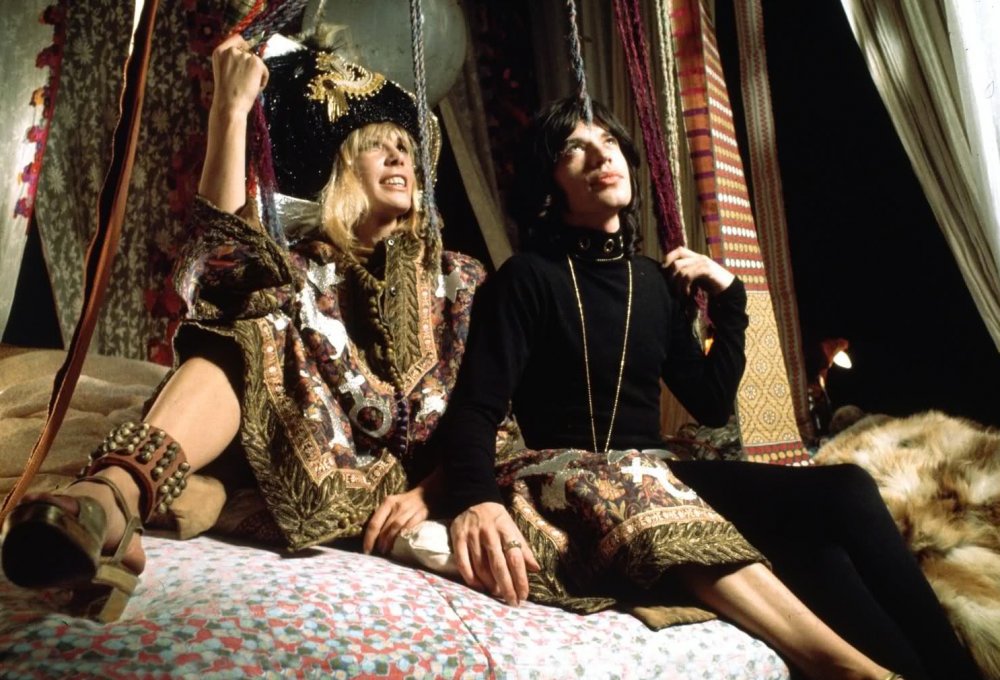
Anita Pallenberg and Mick Jagger in Performance (1970)
It was Gibbs who spawned the new Chelsea, the Chelsea of 1959, the pivotal year. He opened an antique shop, buying and selling old clothes, as Nik Cohn recounts: “Following Suna Portman’s example, Christopher Gibbs had gone to Morocco and brought back Arabic robes and slippers, and quantities of hashish. He sat at home, propped up on his Marrakech cushions and surrounded by his friends, and this was among the first English attempts at what later became the Hippie lifestyle.”
Gibbs’s new clan comprised the Ormsby Gores, Michael Rainey, Mark Palmer, Tara Browne, David Mlinaric. In due course, this clan of aristocratic dandies (“Dandyism,” said Baudelaire, its first great theorist, “is the last splendour of heroism in decadence”) met the new pop elite, the Beatles, the Stones.
In public, this meant the Ad Lib; later, in the mid-60s and in private, it meant One Courtfield Road, by Gloucester Road tube, where Brian Jones lived with Anita Pallenberg. Again the Moroccan rug, the exotic hangings, the lamps draped with scarves, the satins and hookahs, Dandyism, Decadence.
This is where a segment of the Stones and their entourage fused with a segment of Chelsea – Gibbs, dandy and decorator, Rainey, clothes designer, Michael Cooper, photographer, Robert Fraser, art gallery owner, and Donald Cammell, prime creator of Performance.
Faithfull fell under the spell. In her book she remembers Gibbs in particular: “a Wildean aesthete come to life, plucked straight from the opening lines of The Picture of Dorian Gray: ‘From the corner of the divan of Persian saddle-bags on which he was lying, Lord Henry elevated his eyebrows, and looked at him in amazement through the thin blue wreaths of smoke that curled up in such fanciful whorls from his heavy opium-tainted cigarette.”’
The stage was set for Performance. Before which, however, Jones had to exit the scene, his place to be possessed by Jagger.
The road to death
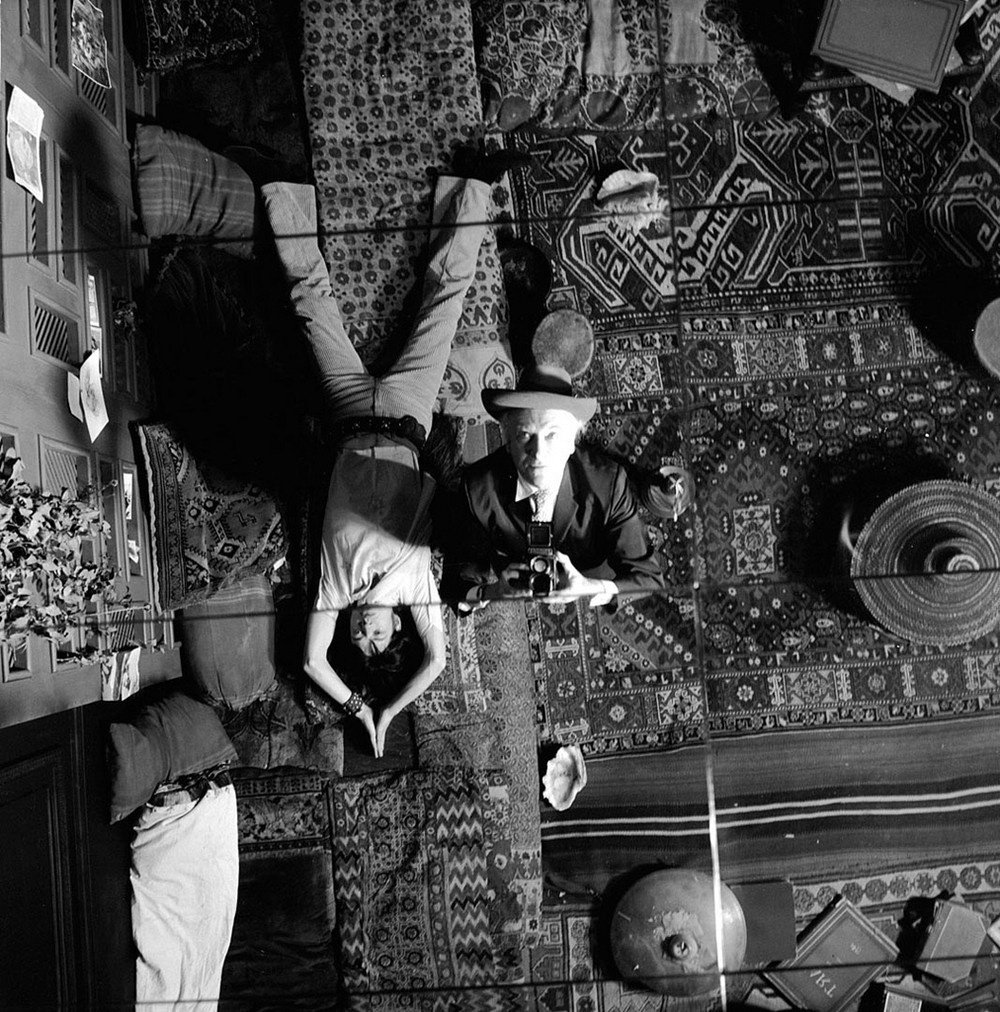
Mick Jagger and Cecil Beaton on the set of Performance (1970)
First, however, a word on dandyism, one of the keys to Performance. Dandyism, argued Baudelaire, himself the moving spirit of Decadence, was “a kind of religion. The most rigorous monastic rule, the inexorable commands of the Old Man ofthe Mountain, who enjoined suicide on his intoxicated disciples, were not more despotic or more slavishly obeyed than this doctrine of elegance and originality, which like the others, imposes upon its ambitious and humble sectaries, men as often as not full of spirit, passion, courage, controlled energy, the terrible precept: Perinde ac cadaver!”
Be like a corpse! Dandyism is the road to death through narcissistic self-sacrifice. In Performance the dandies are artists headed towards destruction, and, in Baudelaire’s words, creators of “a new kind of aristocracy”, which displays “the last flicker of heroism in a decadent age”, to become “its high priests and its victims at one and the same time”.
But the reference to the Old Man of the Mountain takes us even closer to the heart of Performance, to the common root of killer and hippie, assassin and hashishin. From his mountain fastness at Alamut in Persia, Hassan-i-Sabbah rewarded his assassins by drugging them with hashish and admitting them to his Garden of Delights, full of rare flowers, strange perfumes and beautiful young women. For 35 years he never left his apartments (except twice to walk on the roof). Legend says that the Old Man’s last words were, “Nothing is true. Everything is permitted!”.
Hassan-i-Sabbah is cited prominently in Performance. His story is recounted by Turner to Chas and the message left behind after Chas has killed Turner reads “GONE TO PERSIA”. Finally, as Chas is driven off in the Roller to what we must assume is to be his own execution, the English countryside gives way, in the final image of the film, to the mountains of Alamut.
The whole film can be seen as an allegory of the encounter of the reclusive Old Man in his Garden of Delights with the dedicated assassin, and their joint death trip together under the sign of “Nothing is true. Everything is permitted!”.
Hassan-i-Sabbah came to Cammell, who originated and wrote the film, as well as co-directing it, by way of William Burroughs. Burroughs read of him in Betty Boutoul’s LeVieux De La Montagne (“The Book”, in Burroughs’s phrase), and he appeared in his first cut-up work, The Exterminator. The cut-up technique also contributed to the making of Performance.
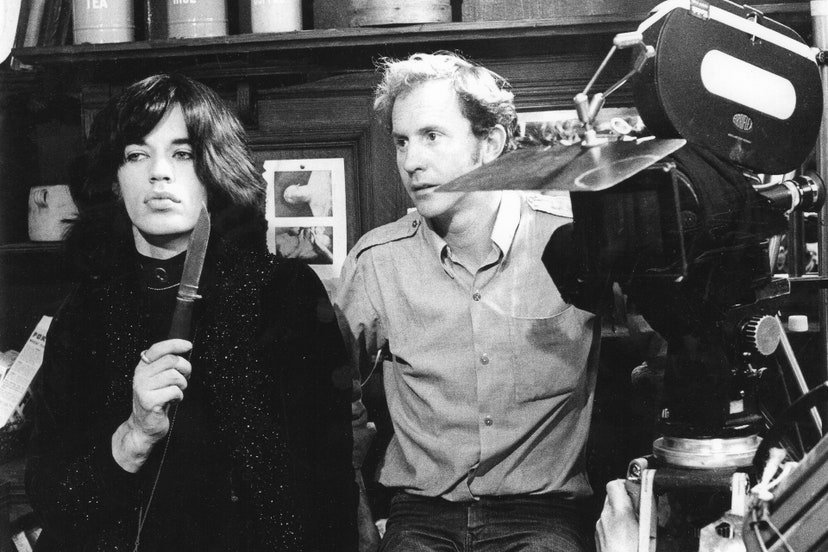
Nicolas Roeg and Mick Jagger on the set of Performance (1970)
Nicolas Roeg, its other co-director (and cinematographer), was intrigued by The Cut-Ups, a film made jointly by Burroughs and Anthony Balch, which was shown at the Cinephone in 1966. Roeg went to Duke Street, where Burroughs then lived, to consult Balch about the arbitrary editing techniques they had used.
According to Faithfull, Pallenberg was “obsessed with Burroughs”, who had moved to London in 1960 and lived for a time in the dreary Empress Hotel in Earl’s Court, happily within walking distance of Courtfield Road, where he was often to be seen.
He also spent a lot of time in Tangiers, where he was living when Mick and Brian and Keith and Marianne and Anita and Gibbs and Deborah Dixon (a costume consultant for Performance) and Michael Cooper and Robert Fraser (with his Moroccan servant) all set out for Morocco in March 1967. Jones never made it, having been hospitalised on the way.)
Morocco was a crucial element in the formation of the Stones, both visually as well as musically. Jones in Courtfield Road and then Jagger in Chester Square had followed Gibbs’s lead in decorating their homes Moroccan-style, and Gibbs replicated this style once again in Performance.
Morocco had long provided a mesmerising image of the Orient and its fabled Garden of Delights, more directly familiar than Persia and in a sense standing in for it. At Courtfield Road, the drug of choice was hashish. It was not until 1966 that LSD invaded London and acid became dominant on the scene.
As a drug text, Performance is a palimpsest of Morocco and hashish, Castaneda and Magic Mushrooms, Richard’s country home Redlands and LSD, with a tell-tale syringe in Pallenberg’s arse making its ominous debut appearance.
Jones, the first Stone onto the gilded drug scene, was also its first victim, the one whose death-drive got the better of him. In Performance the assassin carries out on Turner the death sentence which Cammell must already have seen was hanging over Jones, and it is Jones that Jagger impersonates in the film.
Jones was the model for what Faithfull calls “the archetypal 60s rock apocalypse character”, who lacked Jagger’s stamina and distance and foundered rapidly under the impact of drugs and shifting allegiances within the band. Indeed, by the time Performance was made, Jones, like Turner, was already a figure of the past, whereas Jagger, who played the role, would still be around to look funny when he was 50.
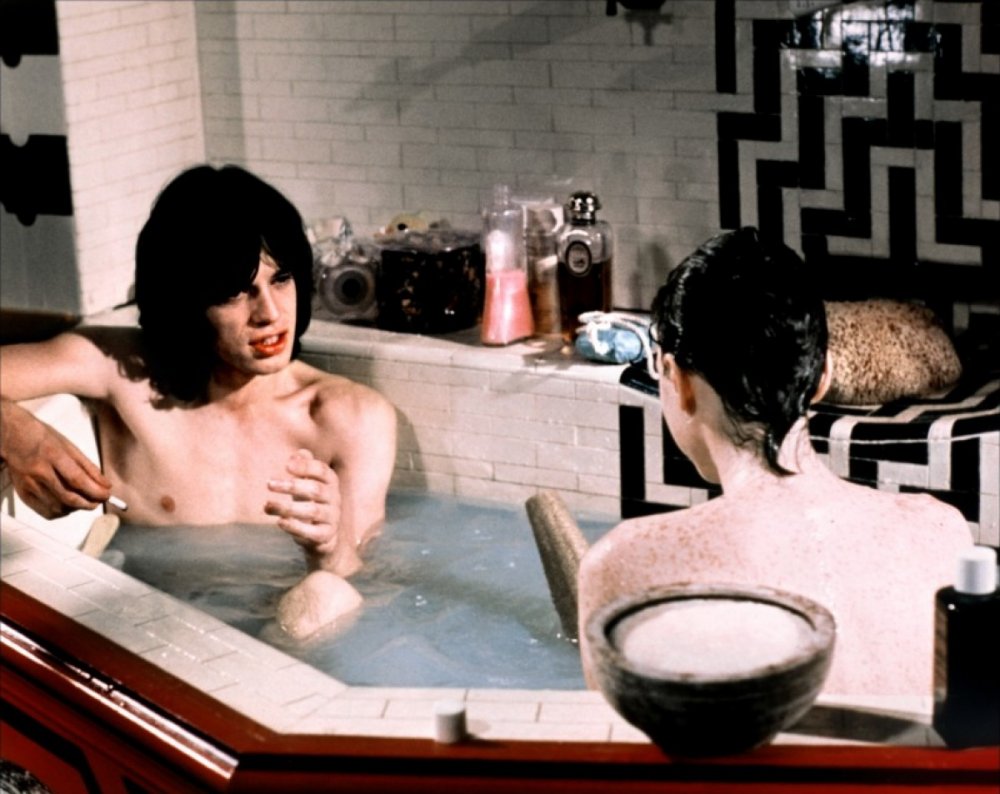
Mick Jagger and Michele Breton in Performance (1970)
Jagger had emerged as a star because of his stage-presence and his role as songwriter with Richard, but also because he took most aptly to the new social role played by the music elite. Already, it was Christmas shopping at Harrods and a late lunch at Lorenzo’s.
Then, early in 1967, there was the drug bust at Redlands, where the party included the two Old Etonians Gibbs and Fraser (plus Moroccan servant), all assembled to sample designer LSD brought by the American ‘Acid King’, David Schneiderman. Suitably stoned, they set off to visit Edward James’s surrealist folly at West Dean, but ended up loaning around on the beach.
Back home, around eight o’clock, they were raided by the West Sussex police. Jagger, Richard and Fraser were busted, tried, sent to jail and finally released.
Redlands was in effect a show bust, designed to stamp out the emergent counterculture. The Stones got away with it because the Establishment split ranks (“Who Breaks A Butterfly On A Wheel?” asked William Rees-Mogg’s editorial in The Times) and decided, at a higher level, that discretion was the better part of valour. Lord Chief Justice Parker dismissed all charges on appeal.
It was Redlands, however, that made Performance possible. In the first place, it established Jagger and Richard as national figures, representatives of their generation. In the second place, it crystallised their image as outlaws. The music which followed Redlands – Their Satanic Majesties Request, Beggars Banquet, Let It Bleed – consolidated this artistically.
At the same time, the realisation that the bust had a political aspect, that a battle-line had been drawn between two cultural regimes, aligned the Stones with the political upheavals of the following year – 1968, the year Performance was made, and the year of the Grosvenor Square demonstration.
Jagger was at Grosvenor Square and subsequently sent the handwritten text of ‘Street Fighting Man’ to Tariq Ali’s The Black Dwarf for publication. Violence (a chain-reaction, of course, from American violence in Vietnam) sat uneasily with flower power and psychedelia.
“There was nothing about flower power in ‘Jumpin’ Jack Flash’, was there?”, Jagger later remarked to Richard. In Performance the two strands were intertwined.
Flowers and violence
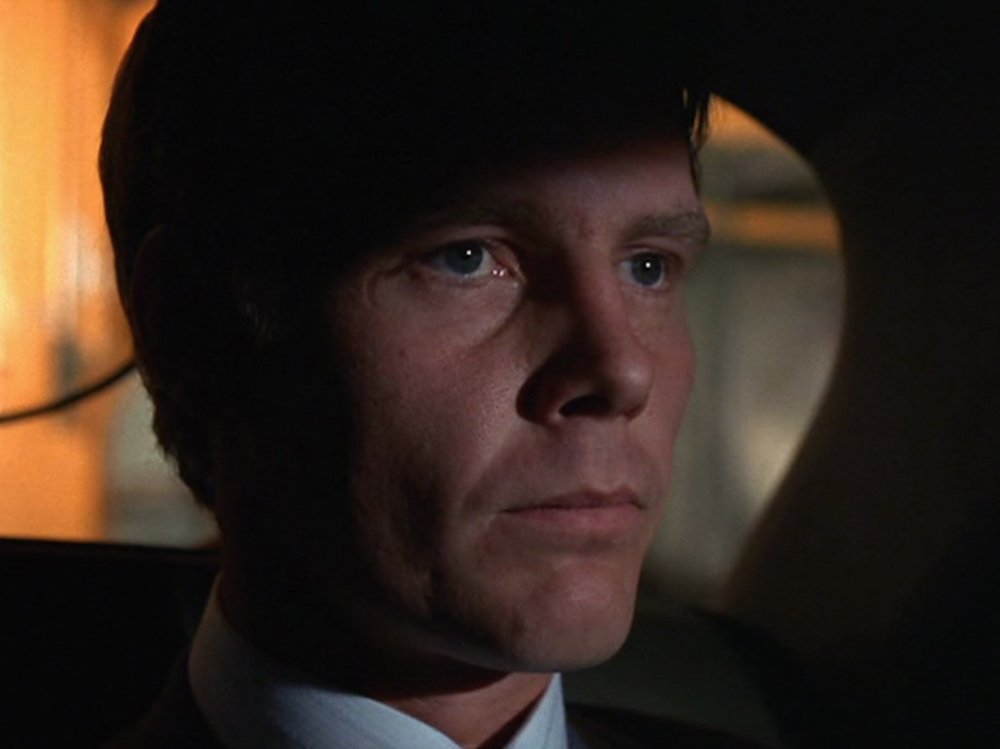
James Fox in Performance (1970)
Cohn notes how, as early as the 50s, the Chelsea beau monde was already mingling with the criminal world. In the 60s the two worlds grew even closer together. Ronnie Kray could be seen at such clubs as the Ad Lib and the Scotch of St James and was photographed with his twin by David Bailey for Bailey’s photo-records of the fashionable world at that time.
The Blind Beggar shooting, on 8 March, 1966, brought the Krays to national prominence. The Robert Fraser circle had its own informant in the world of the Krays – gay aristo David Litvinoff, who served as ‘Director of Authenticity’ or (more formally) ‘Dialogue Coach’ on Performance.
Part of Litvinoffs job was, in Faithfull’s words, “to be James Fox’s tutor in infamy, immersing James in the netherworld of London”. Fox was taken down to Brixton and the Old Kent Road and (according to ‘Spanish Tony’, the Stones’ own netherworld connection) sent on house-breaking missions, as part of this “immersion”. Fox himself spotted Johnny Shannon during these expeditions, a boxing trainer at the Thomas A Beckett, who plays the Ronnie Kray-esque gay gang boss, Harry Flowers.
As Jagger put it, “He hung out all the time with all kinds of fucking rough people. Very rough people indeed.” Cammell observed that “The essence of a ‘total’ performance is that the playing of a role becomes a transference of identity – a kind of ‘possession’.”
There is a deeper sense in which the entire film of Performance is about possession. Chas/Fox is possessed by Turner/Jagger and thus recognises Turner’s own desire for death.
Performance is a makeover movie with a surprising sting in the tail. A gangster movie is gradually absorbed by a hippie pastoral, but there remains an irreducible core of violence, which psychedelia and music and sex cannot ever overcome – with which, indeed, they are covertly complicit.
As Roeg put it, “Turner is like a man who meets a mirror of himself” Turner makes Chas over just as Pallenberg used to make Jones over to look like Francoise Hardy – or herself) but he is also deeply attracted by the low-life violence he senses in Chas and hence in himself Chas surrounds himself with an armour of masculinity to deny his own femaleness. Turner surrounds himself with a cocoon of femininity to deny his maleness, his violence.
When the film was released, Jagger commented that he could not really follow Cammell’s thoughts about the relationship between music and violence. “Donald’s always trying to explain it to me and I just blindly carry on.”
From Jagger’s own account, however, it seems that Cammell saw rock music as a ritualisation of violence, which, like tournaments in feudal times, acted as a safety valve, permitting its free expression in theatricalised form.
As Cammell himself observed, “The film was made two-and-a-half years ago. Now we’ve had Altamont. It’s so obvious that Turner has been through an Altamont type of disaster that we’d probably have used it now.” Altamont, in this reading, was a breakdown of ritualisation, of the kind anticipated in Performance, a resurgence of violence from within psychedelia.
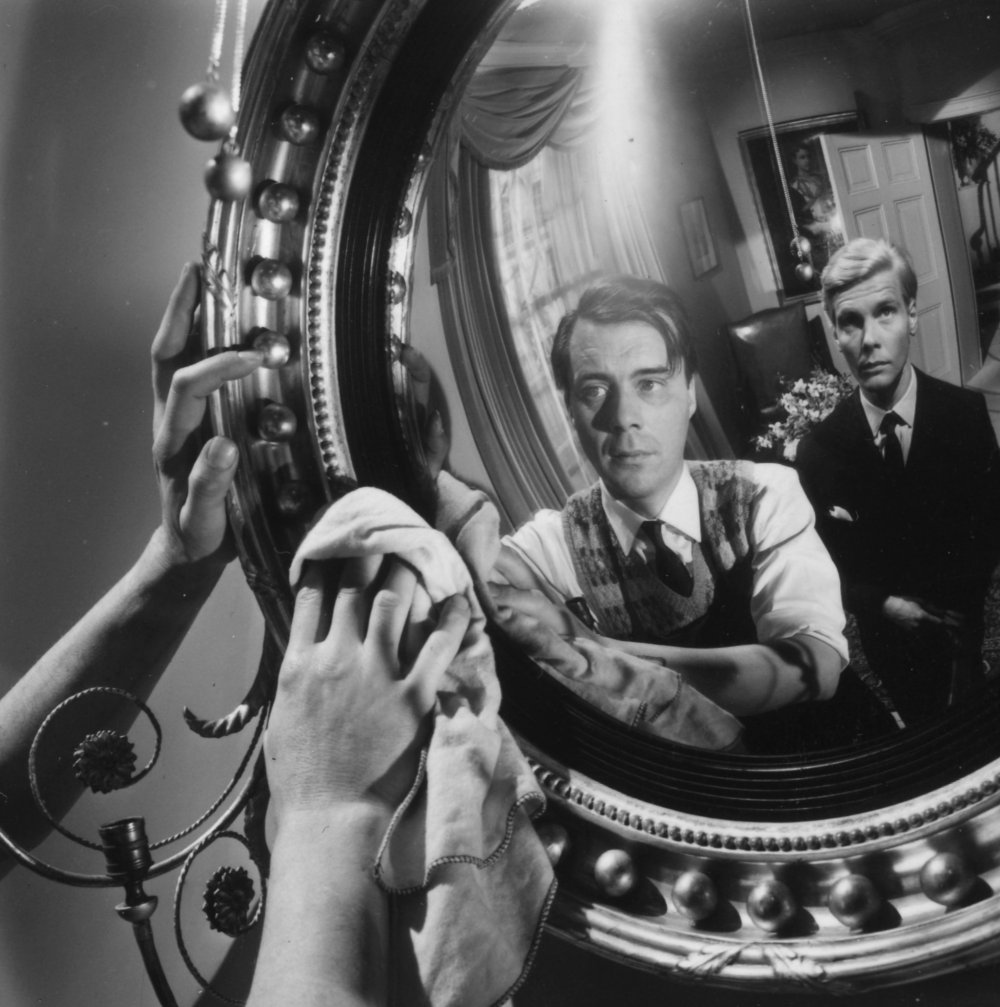
Dirk Bogarde and James Fox in Joseph Losey’s The Servant (1963)
The roots of the film plainly go back to Joseph Losey’s masterpiece The Servant, made five years earlier, in 1963. This time, however, the story is reversed. It is Fox who intrudes into the house and is possessed by its owner, rather than the owner who is possessed by the intruder.
Following Losey’s example, Performance is the British film which comes closest to a modernist art film in the New Wave mould. Its direct predecessors were The Servant, Repulsion and Blowup, all London films made by foreigners – Losey, Polanski, Antonioni – but set in Chelsea or South Kensington.
Performance moves decisively north of the park, to Powis Square, just off Portobello Road, then seen as a crumbling crime-ridden ghetto. It anticipated Jarman’s Jubilee and such later Netting Hill films as Crystal Gazing (which I made with Laura Mulvey) or Hanif Kureishi’s London Kills Me.
Unexpected elements of Performance can also be detected in Greenaway’s The Cook, The Thief, His Wife And Her Lover: the ceremonial torture of a gang victim on the front bumper of a luxury car, the androgynous child, the fatal encounter of gangster and effete book-reader.
In a wider context, Performance can be seen in relation to Godard – Pierrot le fou with “ketchup all over the screen”, La Chinoise and of course One Plus One – as well as to Bertolucci’s Partner, Antonioni’s Zabriskie Point, Pasolini’s Teorema, Kubrick’s Clockwork Orange, Makaveyev’s W.R.-Misterije Organizme (W.R.-Mysteries of the Organism), Hopper’s Easy Rider, even Lindsay Anderson’s If…. .
This cluster of films makes up what we might call the ‘68 canon, the extraordinary output of a few brief years when the cinema, as Cammell remarked of Jagger, “took art out to the edge where it begins to have weird effects.”
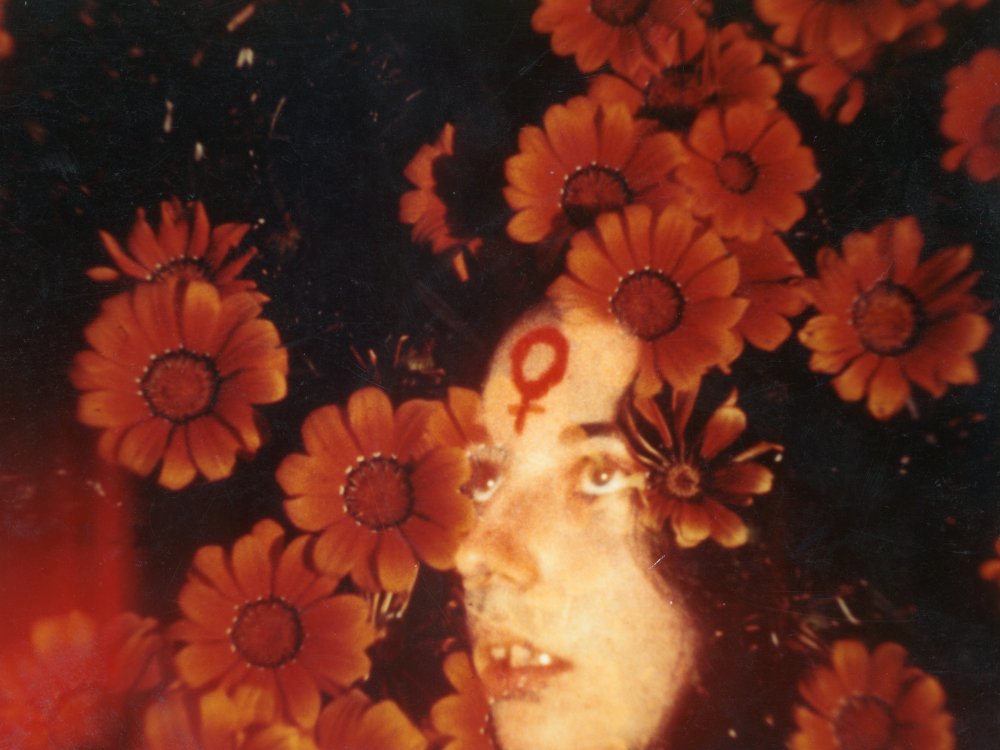
Invocation of My Demon Brother (1969)
However, the most revealing comparison which might be made is the one between Performance and the “anti-cinema” of Kenneth Anger. Anger was obsessed with Jagger. He had known the Stones since the Courtfield Road days and was fascinated with what he interpreted as their satanic power. He was especially influential on Pallenberg, who became interested in witchcraft and the Crowleian magick which Anger preached.
Crowley’s motto, “Do What Thou Wilt”, plainly paralleled Hassan-i-Sabbah’s “Nothing is true. Everything is permitted!”. Anger’s films have the same mix of fascination with sexuality, violence and occult lore which marks Performance. The homosexual motorcycle gang in Scorpio Rising (1963) precedes the Jack the Lad gang in Performance – and Anger’s project during his London years, which coincided with the making of Performance, involved persuading Jagger to create the synthesised soundtrack for Anger’s 1969 film Invocation of My Demon Brother.
Indeed, the motif of the Demon Brother itself evokes Performance. In Anger’s words, the Demon Brother is “the eidolon, or the secret double who is possibly a demon and possibly an angel. It’s either your better self or your worse self, or the part of you that’s needed to become complete.”
Bobby Beausoleil, the Demon Brother in Anger’s film, proved to be demonic – he went to jail for life for murder. Anger saw his own inspiration as coming from Rimbaud or Lautreamont, whose example could restore faith “in a ‘pure cinema’ of sensual revelation… We will give back to the dream the first state of its veneration. We will recall primitive mysteries… Hidden away are the followers of a faith in ‘pure cinema’, even in this unlikely age.” Performance, I believe, shares this same romantic agony and aspiration.
Kindred spirits
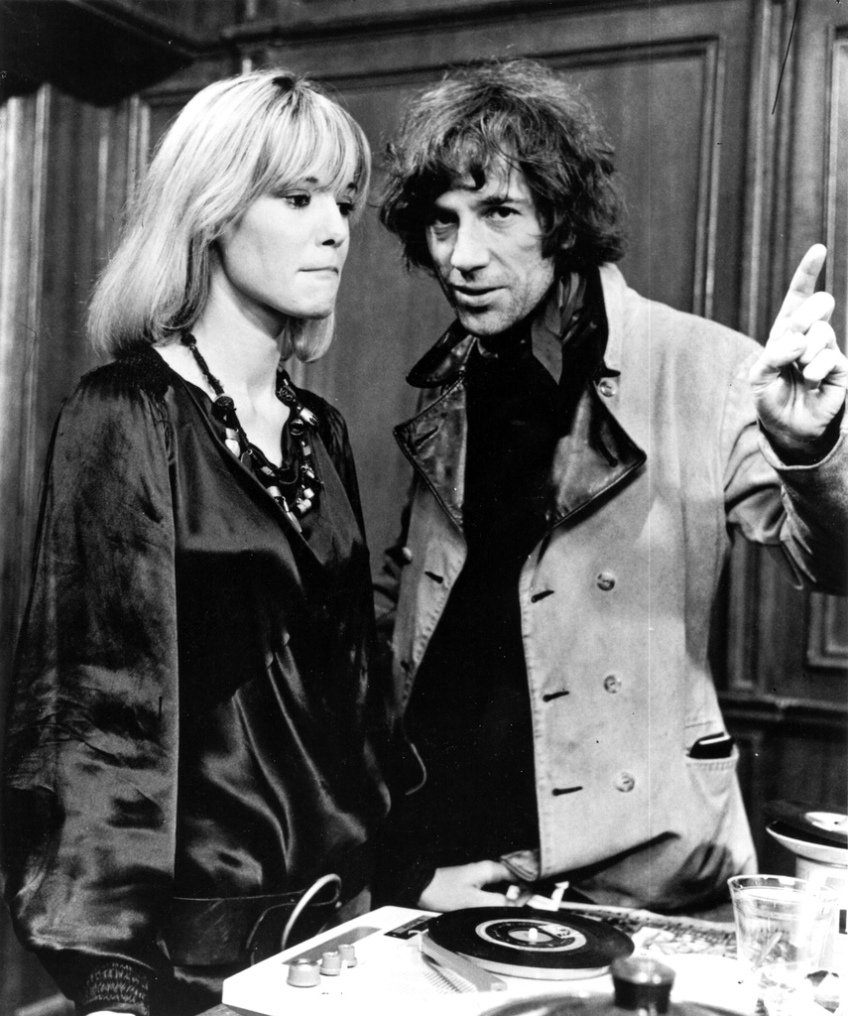
Anita Pallenberg and Donald Cammell on the set of Peformance (1970)
Like Anger’s films, Performance also has the feel of a home movie, albeit a home movie produced by Warner Brothers.
All the major participants knew each other. Cammell had lived with Deborah Dixon but also, in separate threesomes, with both Breton and Pallenberg.
Gibbs was a central figure in the Stones-Fraser milieu; Fox and his partner Andee Cohen had been close to Jagger and Faithfull since they met at Dirk Bogarde’s 1967 Christmas Party at the Connaught HoteL
Cohen was an “an unrepentant Bohemian” who believed in past lives, according to Faithfull, and the two couples were “kindred spirits”.
The legendary Jack Nitzsche, who did the film’s extraordinary soundtrack, was another old Stones associate, introduced to them to do the arrangements on their first album because of Andrew Loog Oldham’s obsession with Phil Spector, for whom Nitzsche had arranged ‘He’s A Rebel’, ‘River Deep, Mountain High’ and the various Ronettes songs.
Roeg was another on the edge of the Stones scene – the only one apart from Fox with a serious filmmaking background. Roeg, according to Jagger, “was the professional doing his thing.” Together with Fox, he played a crucial role holding the project together, but the crazed, fantasmatic world of the film came primarily from Cammell’s perverse imagination. It depended on casting so many people he knew both with and against the grain, forcing them further than they wanted to go, drawing on his acute perception of their public strengths and private weaknesses.
It was Cammell who wanted to draw on the image of the Stones as an “enemy to straight people”, an enemy to the whole Establishment, especially to judges and lawyers and corporate power. “The movie makes it real. It upsets them. They’re scared.”
The concept of filmmaking as a magical art places Performance squarely within the Decadent as well as the modern tradition. In fact the two are linked. The cinematic influences of Losey or Godard or Anger run in parallel with the literary influences of Nabokov or Burroughs or Borges (whose image appears in the film at the moment of Turner’s death).
Modernist fascination with interiority, shifting structures of time, reversibility of dream and reality, stories of doubles and cognitive illusions (all so evident in Roeg’s later career) easily bleeds into a fascination with extreme mental states, sexual transgression, drugs, occultism and possession, perhaps more suggestive of Cammell’s later work – the highly disconcerting Demon Seed (1977) and White of the Eye (1986).
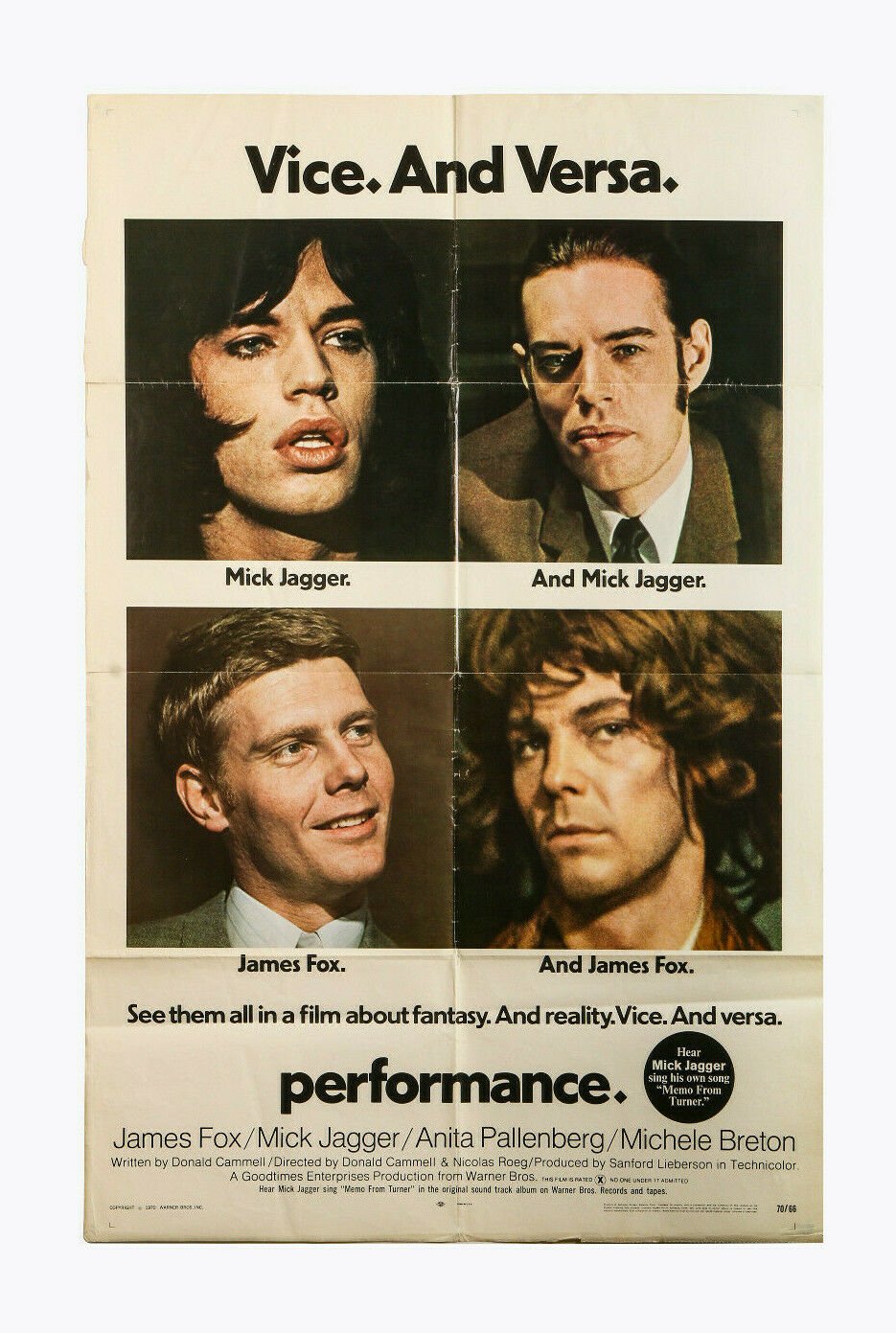
When I first saw Performance in 1970, I lived only a stone’s throw from 81 Powis Square. It was already ten years after my own trip to Persia, ten years after sharing a flat with the future founders of Indica, International Times and UFO.
I knew that Performance’s release had been delayed because a “nervous” Warner Brothers, as the phrase goes, “didn’t know what to do with it,” that it was already a film maudit. I knew the cultural milieu from which it emerged and so saw it as a film with its own precise co-ordinates in space, time and life.
It was our film – London, ’68, the counterculture. At the time, I saw it as the beginning of something. Now I see it more as the end, the last splendour of heroism in Decadence, a strange vision of England as its own fantastic double, which might have turned out either angel or demon, but never got the chance.
-
The 100 Greatest Films of All Time 2012
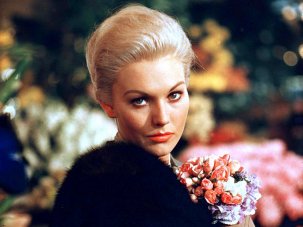
In our biggest ever film critics’ poll, the list of best movies ever made has a new top film, ending the 50-year reign of Citizen Kane.
Wednesday 1 August 2012
-
The Digital Edition and Archive quick link
Log in here to your digital edition and archive subscription, take a look at the packages on offer and buy a subscription.




